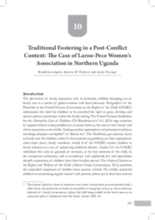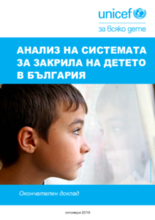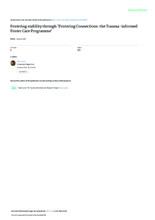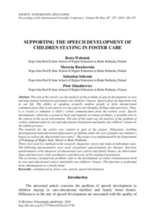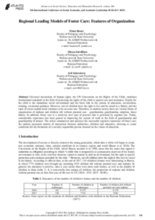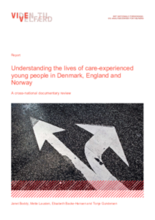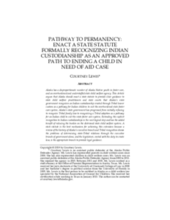Displaying 991 - 1000 of 2214
This documentary from HBO explores the often-misunderstood world of foster care in the U.S. through compelling stories from the Los Angeles County Department of Children and Family Services, the largest county child welfare agency in the country.
This publication is presented in three parts. Part 1 discusses how seeing Haitian children as part of a complex and beautiful social system can inform best practices in child care reform. Part 2 highlights eight organizations working towards family-based care and the preservation of families and communities. Part 3 provides inspiration for collective action and transformation.
This chapter from Social Work Practice in Africa: Indigenous and Innovative Approaches presents a traditional fostering model adopted by a group of women in Northern Uganda, analysing its potential for building resilience and for contributing to social capital and social development within the broad context of post-conflict situations.
This research is based on a stock-taking of the current situation. It is based on a comprehensive literature review and a genuine primary research with service users as well as policy makers, service providers, children and families.
This article describes some of the research outcomes and the ongoing work of the research collaboration between University College Cork (UCC) and Tusla – Child and Family Agency which sought to make a contribution to fostering stability through applying the approach of traumainformed care.
The aim of the article was the analysis of the problem of speech development in care and educational institutions and family-run children’s houses in Poland.
This article summarizes and analyzes the successful regional experience of foster care in Russia; the authors presented models of interaction between authorities, children and educators, allowing to create conditions for the formation of a socially responsible person, focused on the values of education.
This working paper has reviewed cross-national datasets for the general population and available national data and other relevant (grey and academic) literature concerned with young people in care and care leavers in the three study countries.
This article argues that the US state of Alaska should enact a state statute to provide clear guidance to state child welfare practitioners and state courts that Alaska’s state government recognizes an Indian custodianship created through Tribal law or custom as a pathway for Indian children to exit the overburdened state foster care system.
The aim of this doctoral thesis was to identify why there are higher rates of unauthorised absence from school among post-primary looked after children and young people (LACYP), what does this tell us about their educational experiences, and what is known to be helpful or unhelpful in addressing this issue.


